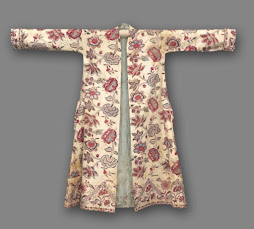Historical Context
The Mughal Empire began with Babur in 1526 and reached its zenith under Akbar, Jahangir, and Shah Jahan. Each emperor contributed to the evolution of Mughal attire, influenced by regional styles, trade, and interactions with other cultures. The elite class, including emperors, nobles, and courtiers, set fashion trends that were emulated across the empire.
Key Features of Mughal Clothing
1. Materials
Mughal clothing was made from luxurious fabrics such as silk, brocade, cotton, and wool. These materials were often richly embroidered with gold and silver threads, reflecting the opulence of the wearers. Fabrics were sourced from various regions, with certain areas known for their high-quality textiles.
2. Styles
Mughal attire can be categorized into several types:
Shirts and Kurtas: Long, flowing garments that were often worn over a churidar (tightly fitting trousers) or paijama (looser pants). Kurtas were typically elaborately embroidered.
Chadors and Shawls: These were draped garments made from fine materials, often adorned with intricate designs. They were worn by both men and women as a mark of elegance.
Jackets and Sherwanis: Men often wore long jackets or sherwanis over their kurtas, which were richly embellished and tailored to fit.
Saris and Lehengas: Women typically wore saris or lehengas, which were made from luxurious fabrics and adorned with intricate embroidery and embellishments.
3. Accessories
Accessories played a vital role in Mughal fashion. Jewelry was abundant and included items such as necklaces, earrings, and rings, often crafted with precious stones. Headgear like turbans and jeweled crowns for men, and intricate hair adornments for women, were common.
Cultural Significance
Mughal clothing was not merely about aesthetics; it represented social hierarchy and cultural identity. The use of specific colors and fabrics could denote rank and status. For instance, certain colors were reserved for royalty, while patterns could indicate the wearer’s profession or region.
Conclusion
Mughal clothing serves as a fascinating glimpse into the culture and society of a bygone era. It illustrates the empire’s wealth, artistry, and the blending of diverse influences that defined Mughal identity. Today, the legacy of Mughal fashion continues to inspire contemporary designs and remains a significant part of India’s cultural heritage. The elaborate garments and craftsmanship are celebrated in modern textiles, keeping the rich tradition alive for future generations.
"This Content Sponsored by Genreviews.Online
Genreviews.online is One of the Review Portal Site
Website Link: https://genreviews.online/
Sponsor Content: #genreviews.online, #genreviews, #productreviews, #bestreviews, #reviewportal"






No comments:
Post a Comment